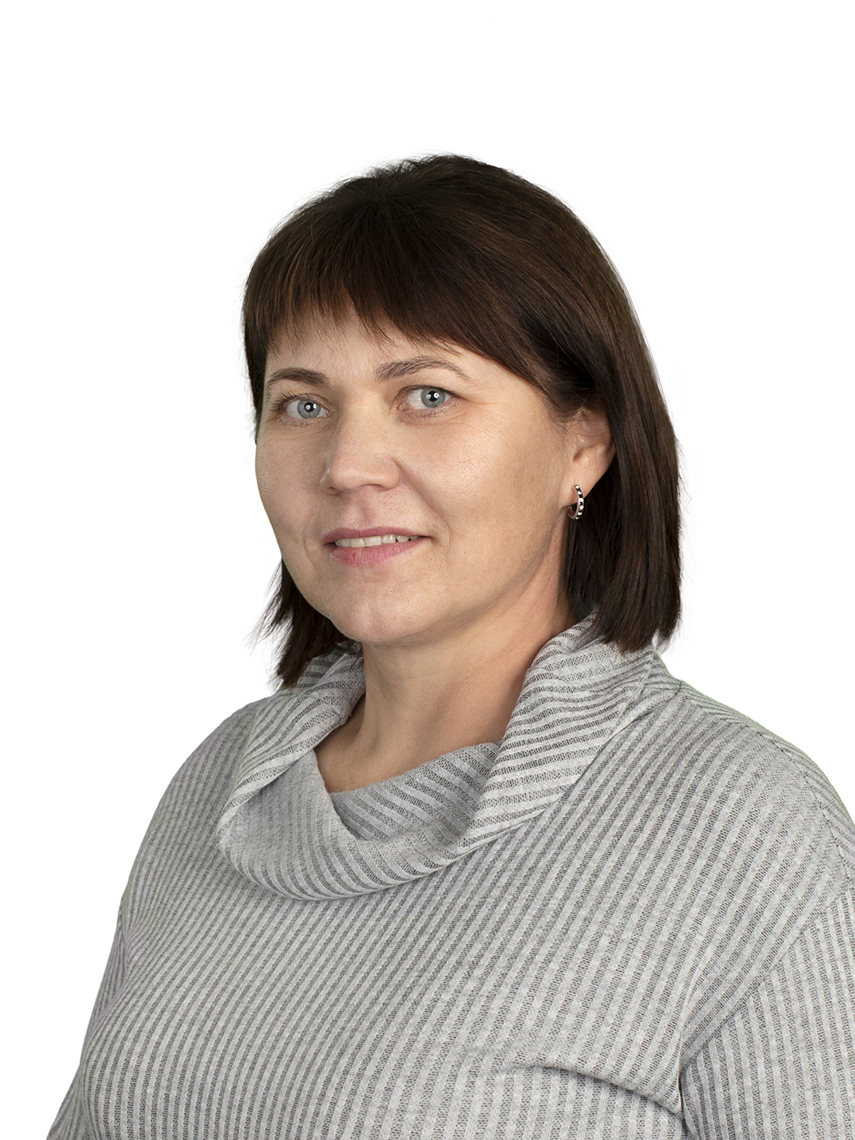 ORCiD iD: 0000-0003-1410-9202
ORCiD iD: 0000-0003-1410-9202
Mob. +370 610 70 500
E-mail: jurate.ramanauskiene@lammc.lt
Instituto al. 1, Akademija, LT-58344 Kėdainiai dist., Lithuania
Education
2009–2012 PhD studies, Lithuanian Research Centre for Agriculture and Forestry.
1987–1992 Diploma of scientific agronomist, Faculty of Agronomy, Academy of Agriculture (since 2019 Vytautas Magnus University Agriculture Academy).
Academic degree
2013 PhD’s degree in Agricultural Sciences, Agronomy, dissertation title “Evaluation of eyespot damage and research into Oculimacula spp. population in winter cereals”.
Research fields
- Diseases of cereals, their epidemiology and biological properties of pathogens
- Identification of pathogens using molecular methods
- Efficacy and selectivity of fungicides in cereals
Position
Since 2017 Senior Researcher, Department of Plant Pathology and Protection, Institute of Agriculture, LAMMC.
Memberships and affiliations with professional organisations
- Member of Nordic Association of Agricultural Scientists (NJF)
Involvement in programmes and projects
- 2020–2022 National project financed by The Ministry of Agriculture of the Republic of Lithuania “Crop condition and yield forecasts in Lithuania”, investigator.
- 2019–2020 National project financed by The Ministry of Agriculture of the Republic of Lithuania (Program for the Lithuanian rural development 2014–2020) “Targeted introduction of integrated pest control under intensive farming conditions”, investigator.
- 2017–2020 National project financed by the Ministry of Transport and Communications “Modernization and Development of Information, Consulting and Training Services Provided by Integrated Plant Protection”, investigator.
- 2018–2019 National project financed by The Ministry of Agriculture of the Republic of Lithuania “Development of basic guidelines for integrated pest management in field, garden and horticultural plants (IPM)”, investigator.
- 2017–2021 Long-term research program “Harmful organisms in agro and forest ecosystems” (KOMAS), investigator.
- 2017–2019 National project financed by The Ministry of Agriculture of the Republic of Lithuania “Evaluation of cereal varieties suitability for integrated pest management (IPM)”, leader.
- 2014–2016 National project financed by The Ministry of Agriculture of the Republic of Lithuania “Evaluation of wheat and rapeseed varieties susceptibility for disease and productivity at different infection level”, investigator.
- 2013–2015 National project financed by The Ministry of Agriculture of the Republic of Lithuania “Integrated pest control measures in economically most important agricultural crops”, investigator.
- 2012–2016 Long-term research program “Harmful organisms in agro and forest ecosystems” (KOMAS), investigator.
- 2012–2014 National project “The importance of plant protection for the production of competitive and exclusive quality products in sustainable agricultural conditions” under the Lithuanian Rural Development Program for 2007–2013, investigator.
- 2011–2012 National project financed by The Ministry of Agriculture of the Republic of Lithuania “Prospects for diseases and pest control in field plants in the context of the sustainable use of pesticides”, investigator.
- 2011–2012 National project financed by Lithuanian Science Board “High-power microwave effects on biological objects”, investigator.
- 2008–2010 National project financed by Lithuanian Science Board “Research on genomics in the Baltic region of economically significant insects, mite and pathogens populations”, investigator.
Supervision of PhD studies
-
2022–2026 Scientific supervisor of Maksims Filipovičs doctoral dissertation “Hyperspectral imaging for early detection of plant diseases”.
-
2022–2026 Scientific supervisor of Simonas Saikauskas doctoral dissertation “The impact of winter and spring wheat cultivars mixtures on leaf spot diseases in different rotation sequences”.
- 2021–2024 Scientific advisor of Aušra Bakšinskaitė doctoral dissertation “Optimization of crop yield and quality using agricultural resources”.
- 2018–2022 Scientific supervisor of Karolina Lavrukaitė doctoral dissertation “Spread, pathogenicity and damage of Zymoseptoria tritici in winter wheat”.
SCIENTIFIC PUBLICATIONS (click the link here)
 ORCiD iD: 0000-0003-1410-9202
ORCiD iD: 0000-0003-1410-9202